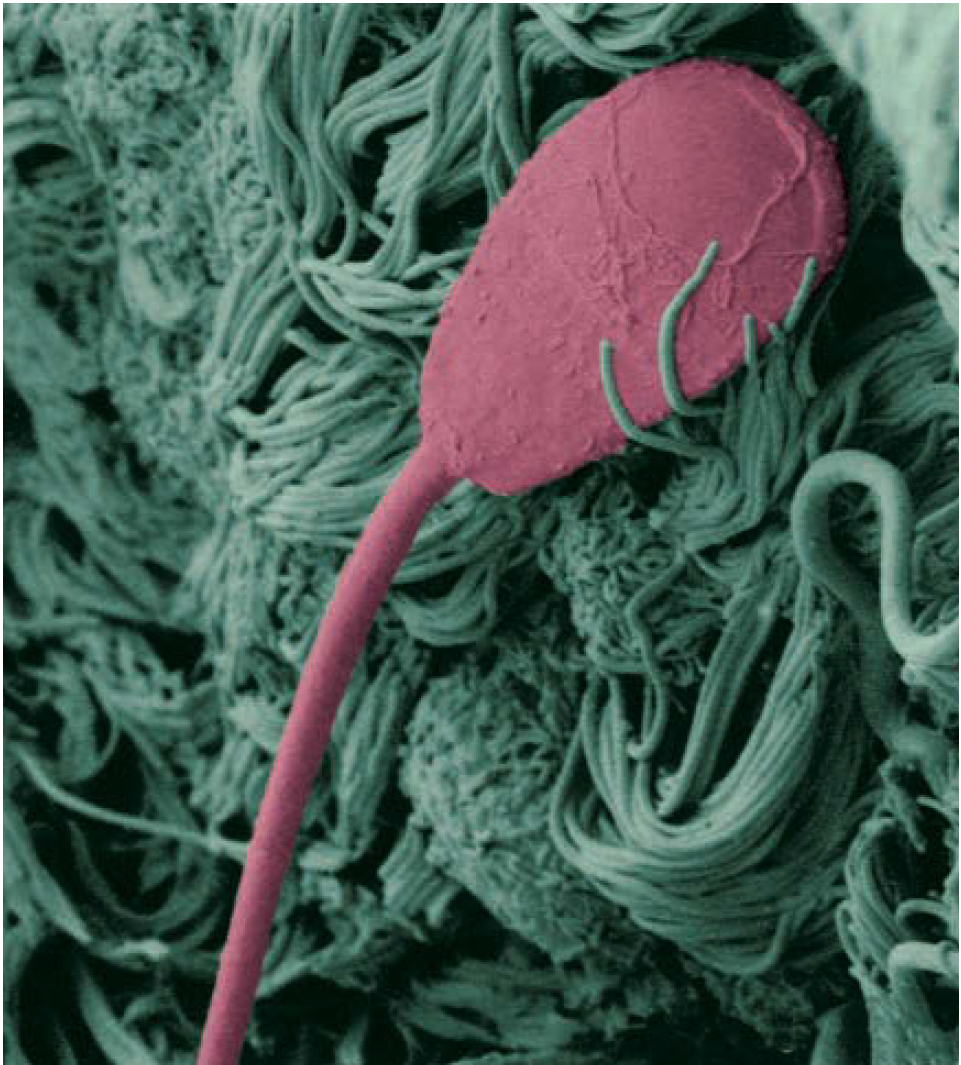Table of Contents
1. Sensing mechanism: Hyperactivation
- Definition: Hyperactivation is a critical phase of the sensing mechanism during sperm migration, occurring toward the end of capacitation.
- Characteristics:
- Increased swimming velocity and force.
- Asynchronous flagellar beating with higher bending.
- Detachment of sperm from oviduct epithelial cells.
- Only capacitated sperm exhibit hyperactivation.
- Enables sperm to respond differently to fluid currents.
- Capacitated sperm rotate around their long axis, aiding detachment.
- Hyaluronidase enzyme helps digest the cumulus cell matrix.
2. Sensing mechanism: Thermotaxis
- Definition: Thermotaxis is the ability of capacitated sperm to sense temperature differences.
- Thermal Gradient: A 2ºC gradient exists between the oviduct isthmus and the warmer ampullary region.
- Behavior:
- Sperm preferentially swim from cooler to warmer sites.
- Sensitivity to temperature differences as small as 0.014ºC over a millimeter.
3. Sensing mechanism: Chemotaxis
- Definition: Chemotaxis involves the attraction of capacitated sperm toward the egg.
- Source of Attraction:
- Oocyte and cumulus cells secrete molecules during late sperm migration.
- These compounds attract sperm specifically when they are capacitated.
- Potential Chemotactic Factors:
- Progesterone:
- Produced by cumulus cells.
- Binds to sperm receptors, activating Ca2+ channels in the tail.
- Induces sperm hyperactivity.
- CRISP1 (in mice):
- Secreted by cumulus cells.
- Attracts sperm through CatSper channels.
- Human Cumulus Factors:
- Form a gradient, guiding sperm movement through the cumulus.
- Active only when sperm are capable of fertilizing the egg.
- Progesterone:
- Intracellular pH Increase: Chemotaxis occurs after sperm intracellular pH rises during capacitation.
- Significance: Ensures sperm reach the egg at the right time for successful fertilization.
Conclusion
Mammalian sperm employ rheotaxis, thermotaxis, and chemotaxis to navigate toward the egg, ensuring precise timing and successful fertilization.

